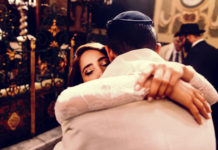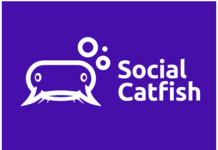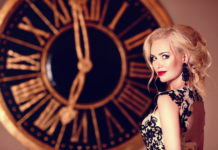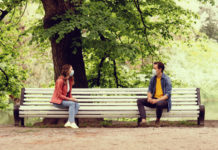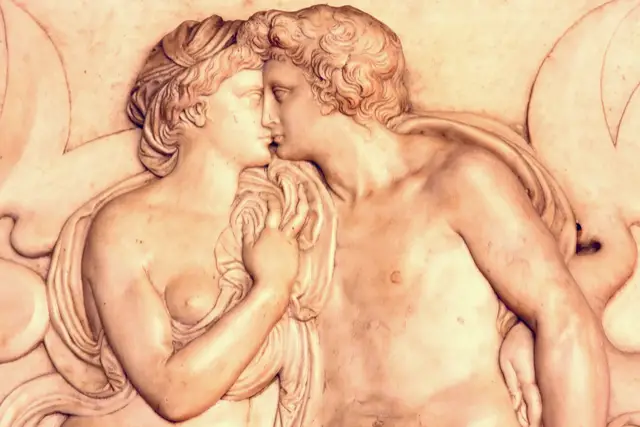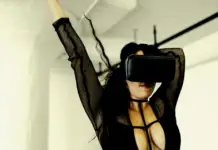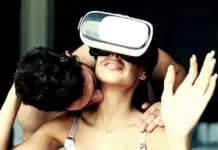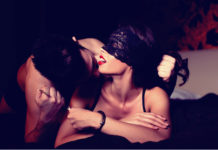(Last Updated on August 26, 2023 by Datezie Editors)
In modern times, hooking up seems to be the norm. Whether a one-night fling after a connection is made on an app or site (see our recommendations for best hookup apps) a long-awaited meetup after weeks — possibly months — of flirting, or a movie-worthy friends with benefits situation (lookin’ at you: Justin Timberlake and Mila Kunis), people of all ages — yep, beyond the college years — are hooking up.
But what exactly does hooking up mean?
Apparently, no one has any clue.
A 2011 study by the University of Nebraska – Lincoln found that students had varied definitions of the term: Some students believed that hooking up meant sex, but others thought it was “just kissing,” “making out” or “fooling around” (whatever that means, anyway). To get granular, hooking up means “to meet up with someone, or to be begin a relationship for a particular purpose,” according to Cambridge Dictionary. Without reading into it — or well, being influenced by the media — hooking up doesn’t necessarily mean mindless, frivolous sex. It’s actually more than that. Hooking up is what happens when you finally own your feelings — sexual or otherwise — for someone and act on it, whether that be in an intimate way or not. It covers everything from a peck on the lips to full-on intercourse.
But why do we bother saying “hooking up” instead of just cutting to the chase?
“It seems the phrase offers a way of divulging information — which, yes, could still be considered gossip — but also provides an element of mystery about the encounter, which could protect privacy in some cases. And in today’s social media-obsessed, oversharing culture, that’s not a bad thing,” Megan Gibson told The Huffington Post.
Regardless of how you go about hooking up, one thing’s for sure: It can be steamy, exciting — and even liberating. Even though there’s been panic about “hookup culture” on college campuses in recent years, the origins of hooking up — whether sex, kissing, or anything in between — have been around for decades. (Even before someone dreamed up the American Pie movies.)
Here’s our definitive history of ‘hooking up’ — and how it has evolved over generations in definition and perspectives.
AdultFriendFinder was selected by the Datezie Editors as the Best Hookup Site of 2023 |
Early America: Rather than intimacy or romance, relationships were about legality.
You probably knew this (or guessed it) but In the 1700s and 1800s, dating didn’t exist in the way it does now. There was a sense of decorum that preceded any first dates, kisses, or sex for that matter. Marriage was simply transactional as a way for families to officially exchange property (we’re talking about the women — yikes). Generally speaking, the courtships were quick. Once the family approved of the suitor, women married the men. This left very little time for couples to even dream of “hooking up,” and many waited until after they were actually married to get intimate. (Or at least, that was the show that was put on for everyone.)
During the Puritan era in the 1800s, married couples began to realize how fun intimacy can be. “The Puritans believed that everything God created was naturally good — including intercourse,” Francis Bremer, a professor emeritus of history at Pennsylvania’s Millersville University said. “They weren’t hostile to sexuality. They saw sex and love as important factors to help a man and a woman form a passionate relationship and strengthen it.” This new attitude is what ultimately changed America’s view of sex, laying the foundation for what we now know as hookup culture. But remember, it still took decades for anything to really change.

Early 1900s: People became increasingly more interested and vocal about their sex lives.
When we think back to the start of the twentieth century, the term “going steady” comes to mind. While starting families was top of mind for young men and women (well, especially the females), couples were very intentional about how they found and determined a partner. As cities began to take shape in the Roaring Twenties, young adults found themselves in mixed-sex groups for the first time. Historically speaking, men and women were often separated for everything from gym class to social outings. This desire to get to know the opposite sex on a more intimate level led to — you guessed it — more hookups.
The Great Depression and World War II, however, stopped this newfound freedom in its tracks. With many men heading off to serve in the war, there was a push for women to pick their guy and “go steady,” especially since there was a smaller pool of single men to choose from. That initial intimacy died down once men returned home, and women were now in the workforce and had desires to start families, pronto.
1960s: The government gets in between the sheets — and then some.
Rock ‘n’ roll music and the Vietnam War aside, the 1960s were an important time for young adults to raise their voices, resist cultural norms, and demand freedom for change. As a result, this era became a sexual revolution of sorts. In year’s past, sex had a negative connotation because many believed it ruined a woman’s innocence, after all. With more public discord than ever before, pharmaceutical companies demanded the government to put their words into action, which resulted in the FDA’s approval of the contraceptive pill on May 11, 1960.
Once birth control became more readily available (FYI, the pill was only available to married women by health care providers for several decades after its approval.), there was a sexual shift in society. “For youth of the 1960s, such restrictions were a thing of the past. Many young women took birth control pills to prevent pregnancy. They freely explored their sexual feelings. Sex before marriage was no longer taboo. Young people extolled the benefits of “free love” — that is, making love without marriage or long-term commitments,” author Edmund Lindop writes. Even Cosmopolitan celebrated birth control, calling it the “new pill that promises make women more responsive” (to their sex drive).
To many, it felt like all the rules about dating, monogamy, and sex were out the window. With the help of the rise of feminism á la Betty Friedan’s The Feminine Mystique, women no longer felt constrained to society’s expectations or even, their own parent’s constraints. This 1964 essay from Time puts it best: “Sex was no longer a source of consternation but a cause for celebration; its presence not what made a person morally suspect, but rather its absence.”
In no time at all, this feeling of celebration transcended from people’s homes into the popular movies, television shows, and literature. The Playboy Club and saucy Cosmopolitan covers were given new life at this time — and for the first time, many women started opening up to their friends about their various hook ups. Another monumental moment during this time period: Women learned what an orgasm should actually feel like (among other things), thanks to Cosmopolitan’s Helen Gurley Brown.
But things really took a turn when National Lampoon’s Animal House was released in 1978. This movie gave everyone expectations — whether true or not — about what college is really like, from raging frat parties to drunken wild sex. And people started to test the waters, big time.

Early 2000s: Popular media began influencing “hookup culture” more than ever before, causing older generations to freak out.
While sexy magazine headlines and sex symbols like Marilyn Monroe and Elizabeth Taylor had been at the center of American culture for decades, it wasn’t until the 2000s when people began realizing how much our society yearned for — and in turn, created — saucy hook up stories. Remember those teen pop stars that America loved so much at the turn on the century? They inspired us to be “Dirty” and even, “Get Ur Freak On.” Popular teen dramas like Beverly Hills, 90210, Buffy, the Vampire Slayer, and The O.C. showed young people what hooking up looked like, but in TV-friendly kind of way. In these shows, there was just as much casual sex as there were true, lasting relationships. Since schools were still making strides in their sex education programs, many teens were first exposed to sex through fictional characters, causing parents, educators, and older generations to panic. Even though these shows made it look like every teenager and college student was trading lasting relationships for hot flings, the statistics prove otherwise.
In fact, a study by the University of Nebraska at Lincoln found that students actually overestimate how much hooking up is happening at their school. 90 percent of college students thought their peers were hooking up two or more times per school year, when only 37 percent of students actually were.

Today: People aren’t hooking up nearly as much as people think.
For those that believe that millennials are the reason behind the buzzed-about “hookup culture” on college campuses, think again. “There was casual sex on campuses from the minute there were campuses. That’s always been true. Today’s college students report no more sexual partners than their parents at that age,” writes Lisa Wade, an associate professor of sociology at Occidental College and author of American Hookup.
It’s simply the way that people (read: the media) talk about millennials and sex that leads others to believe they’re getting down and dirty far more than previous generations. In a 2014 study published in the Journal of Sex Research, researchers compared sexual practices of college students from 1988-1996 to those of 2004-2012. The results were shocking to say the least: The study notes that recent students didn’t report more sexual partners after the age 18, more frequent sex, or more partners during the past year than respondents from the earlier survey.
With that being said, it’s the way that millennials are talking about sex — with candor and transparency — that gives the allusion that they’re more prone to hookups. They’re more comfortable sharing their sexual experiences — the good, bad, or ugly — with peers, which makes the conversations that were once pushed under the rug, front and center.
The sex acts themselves are, however, evolving. “Oral sex is no longer the exotic addition to the normal repertoire of their parents’ generation,” The Age reports. Instead, more people are engaging in threesomes, foursomes, and more exotic sex acts that were once considered taboo. Think about it this way: What was previously thought of as a mere fantasy is now a common act, or even foreplay at best.
It’s simple, really: People have been hooking up before the term “hookup” even came to be. “there’s always been casual sex on college campuses,” says Wade “That’s been true since before women were there.” And sure, one night stands, summer flings, and college sex escapades are no longer hush-hush, but that doesn’t mean their a new discovery. The difference is that people now have the freedom to talk about it and there are more ways to make their hook up dreams a reality with dating apps and social media.
And hey, Netflix and chillin’ isn’t so bad, is it?

